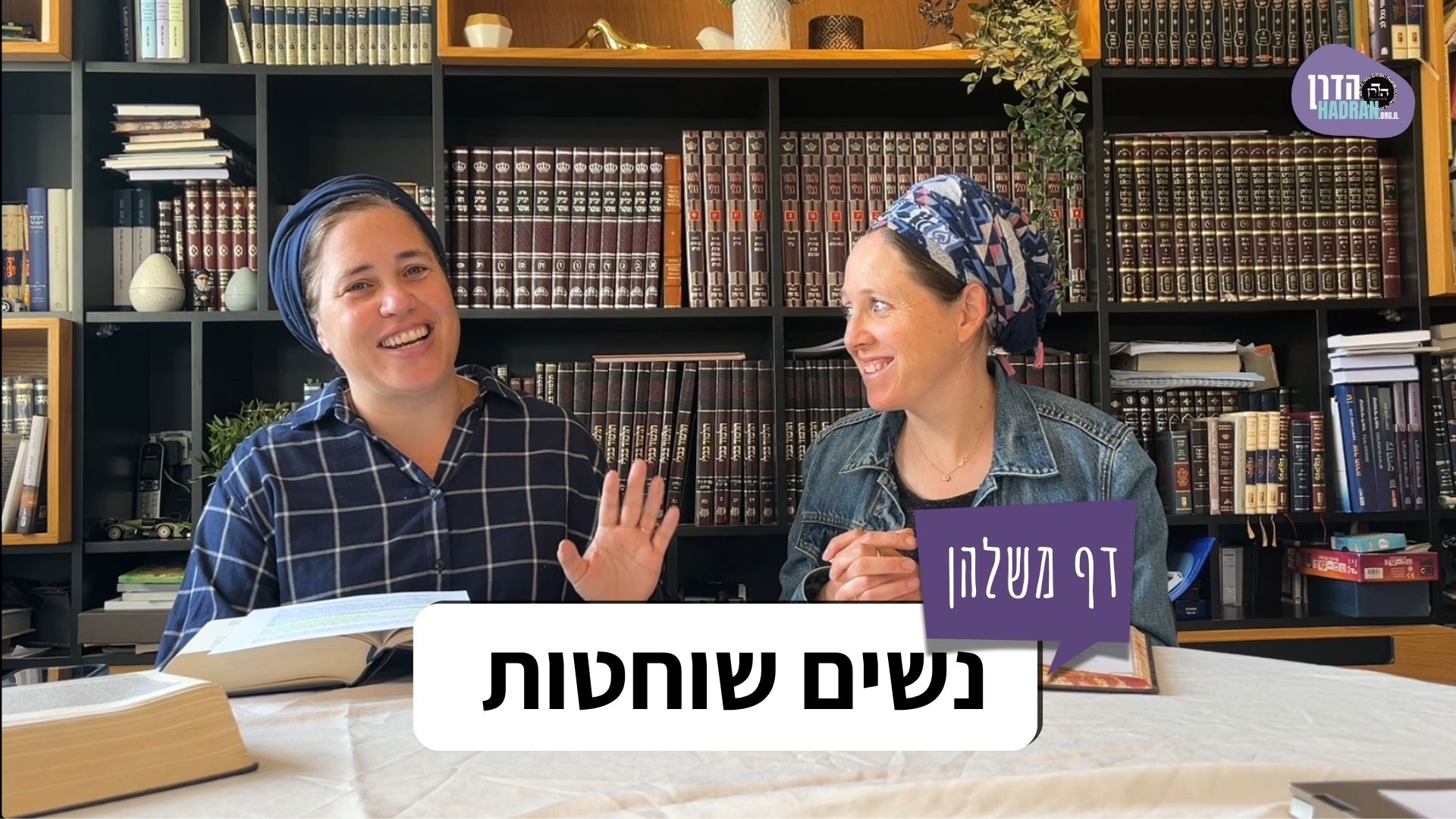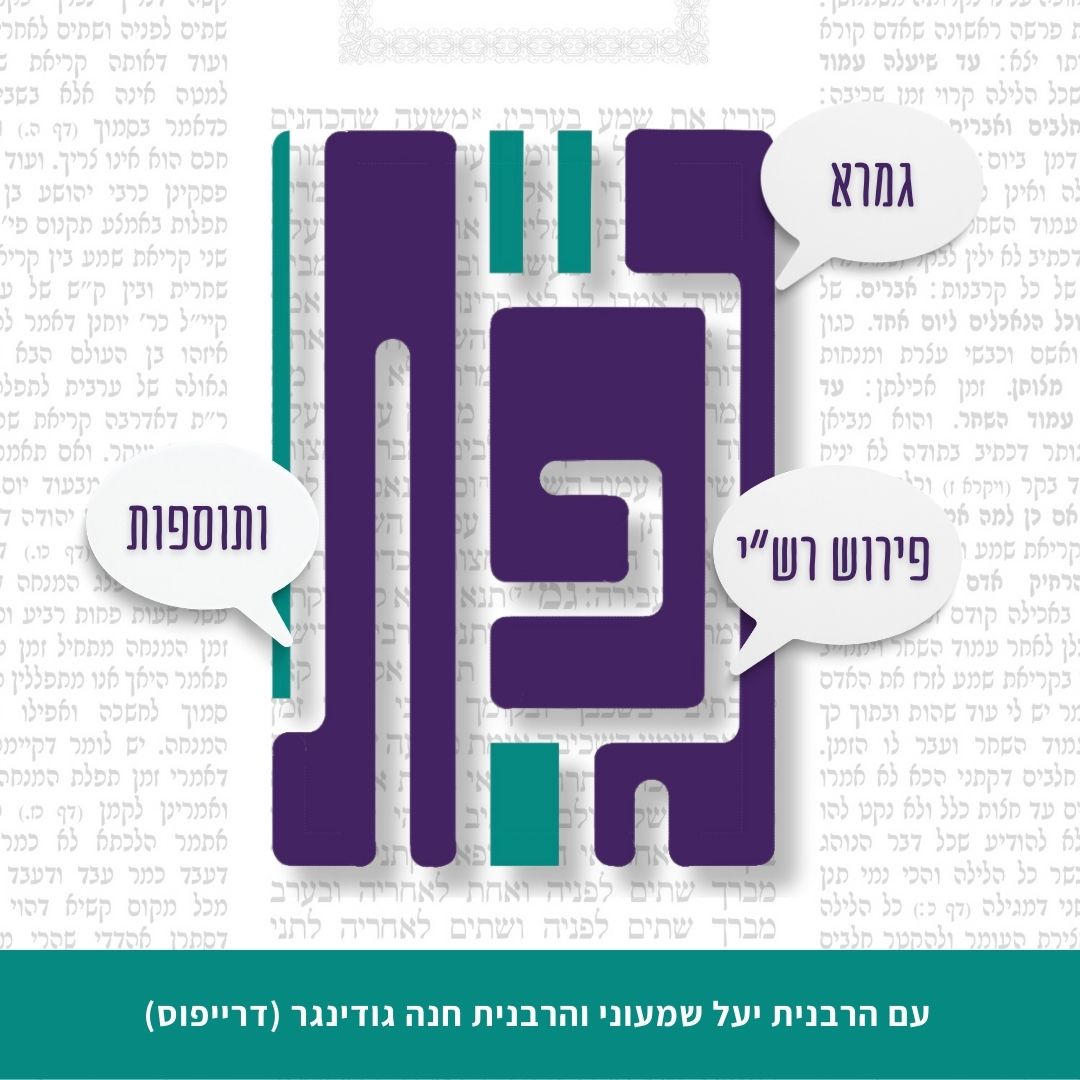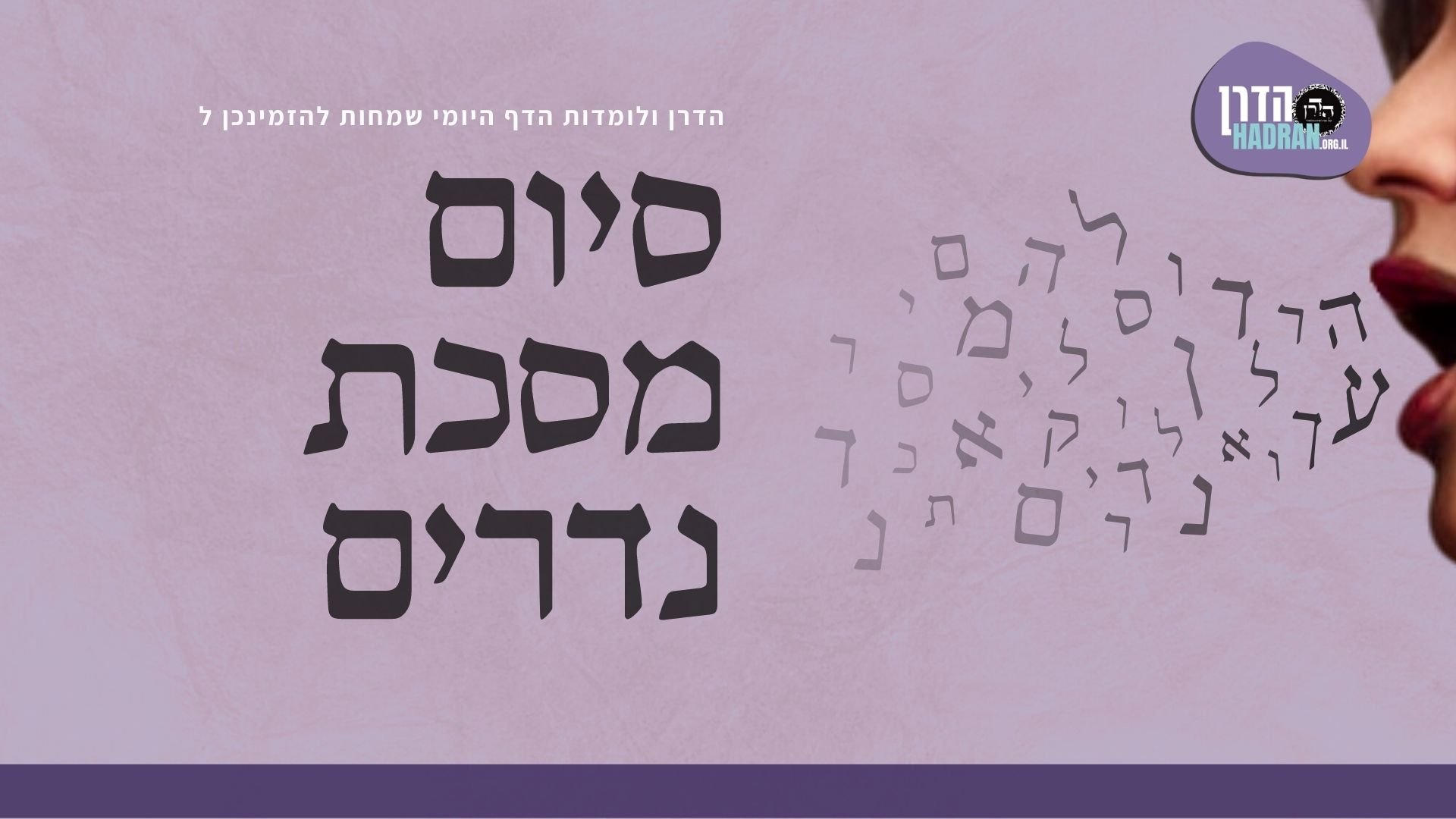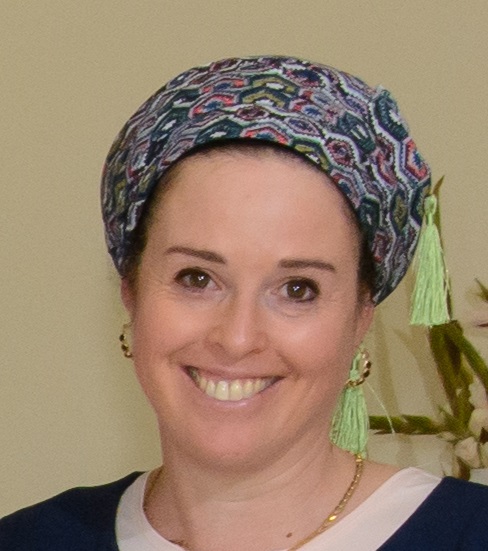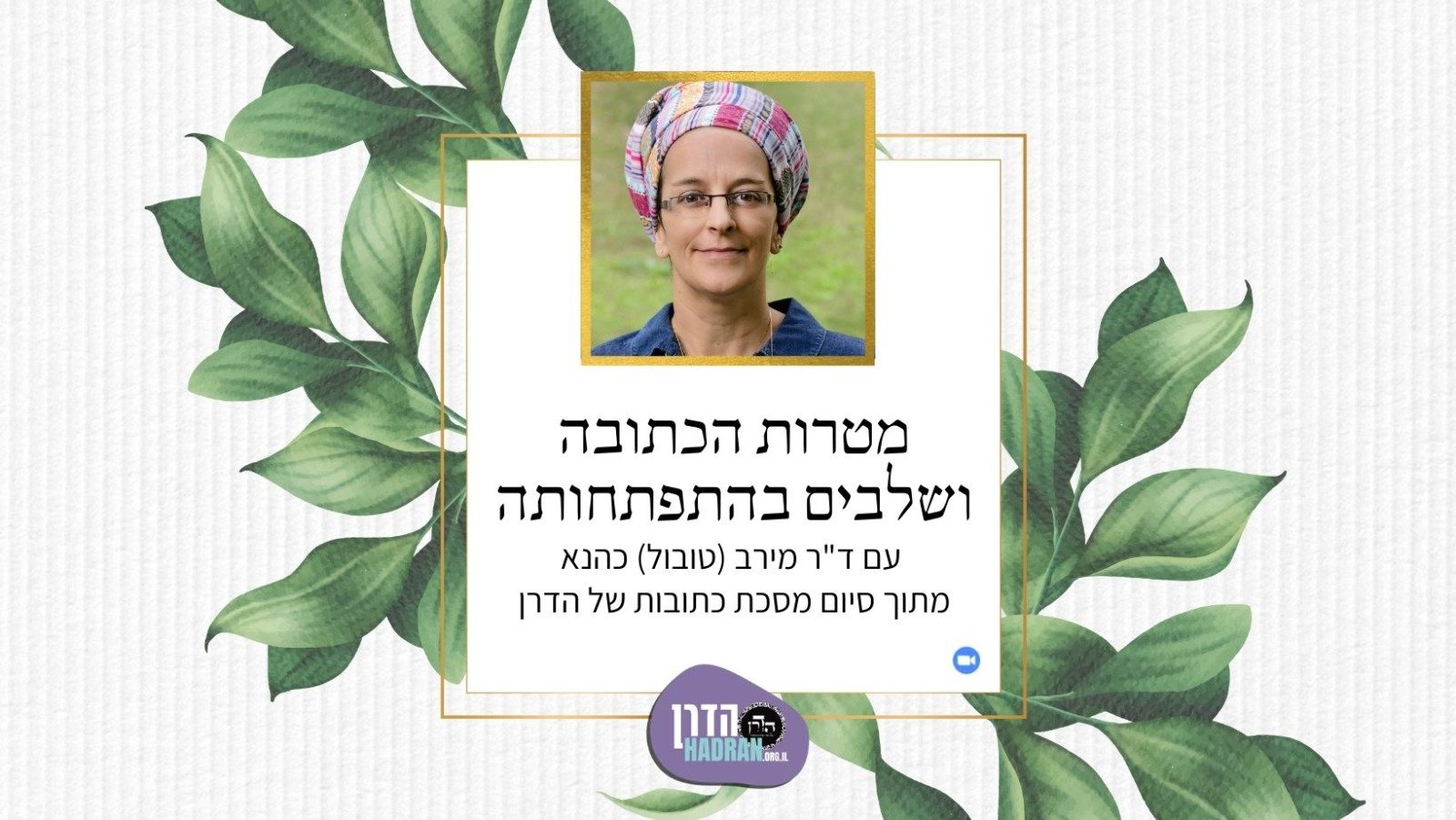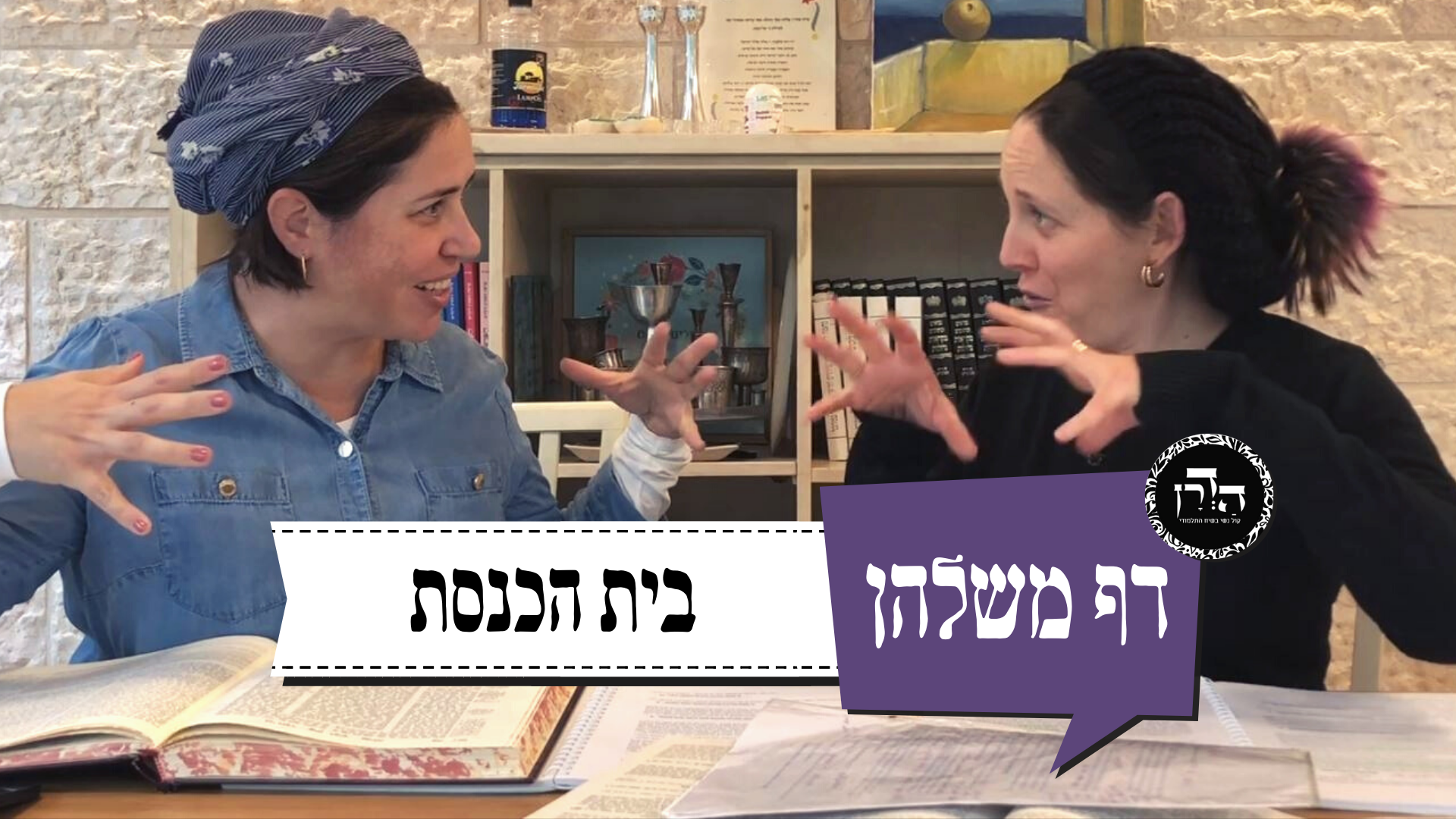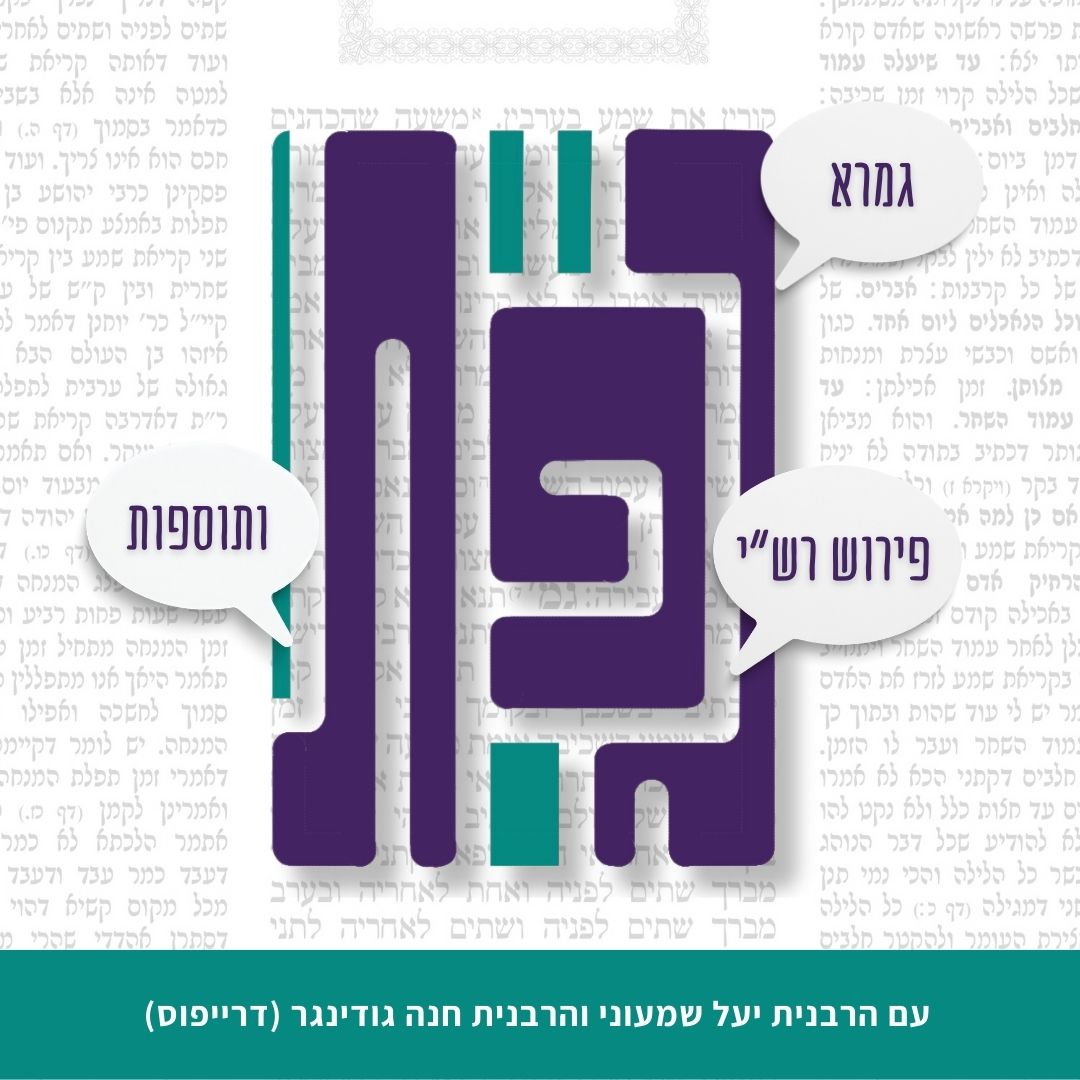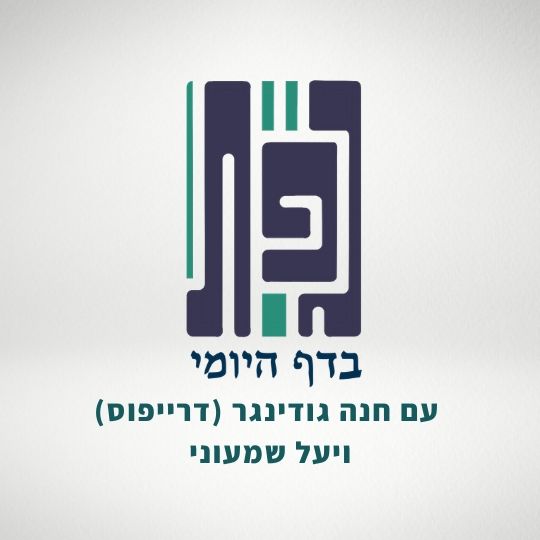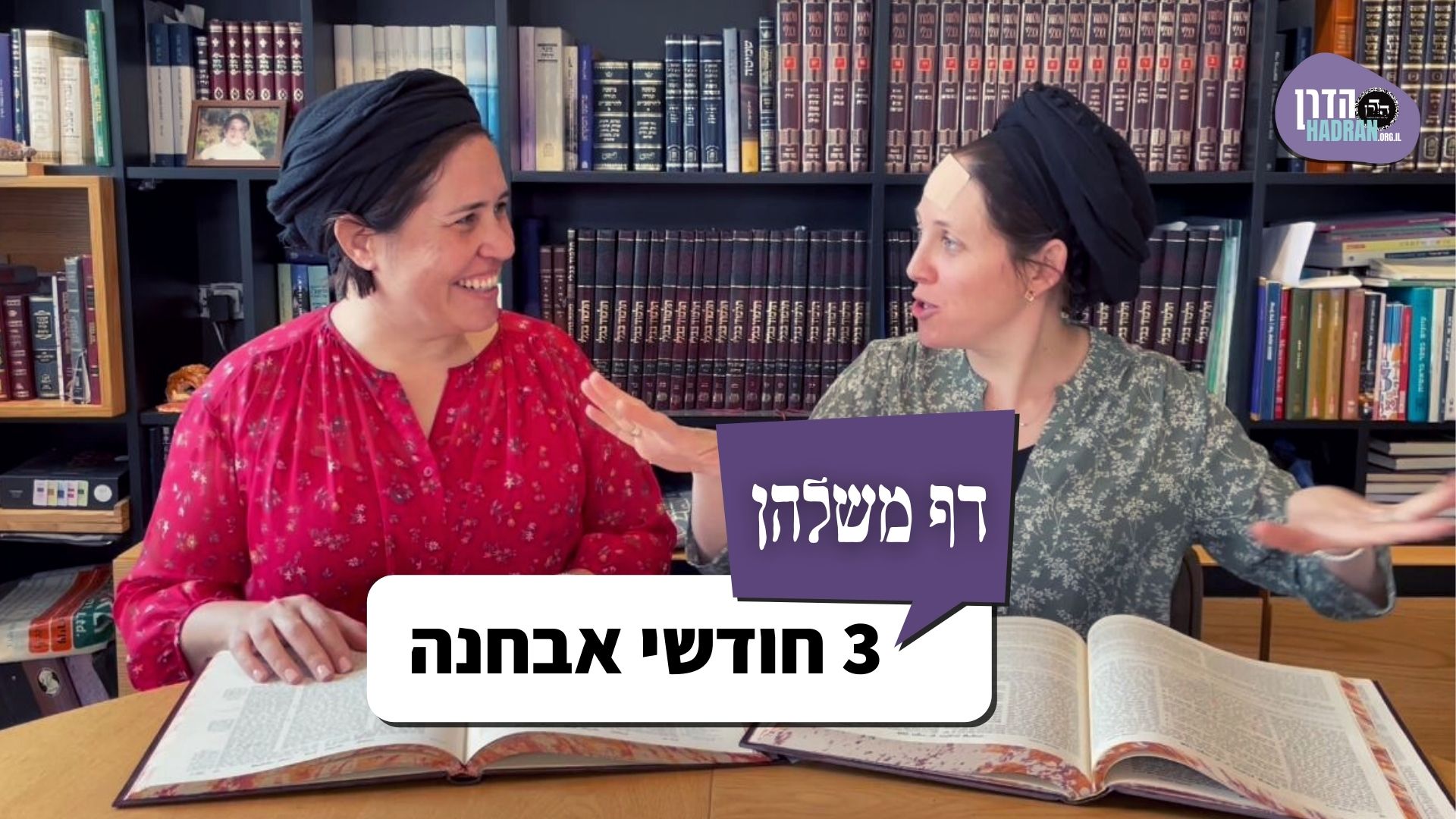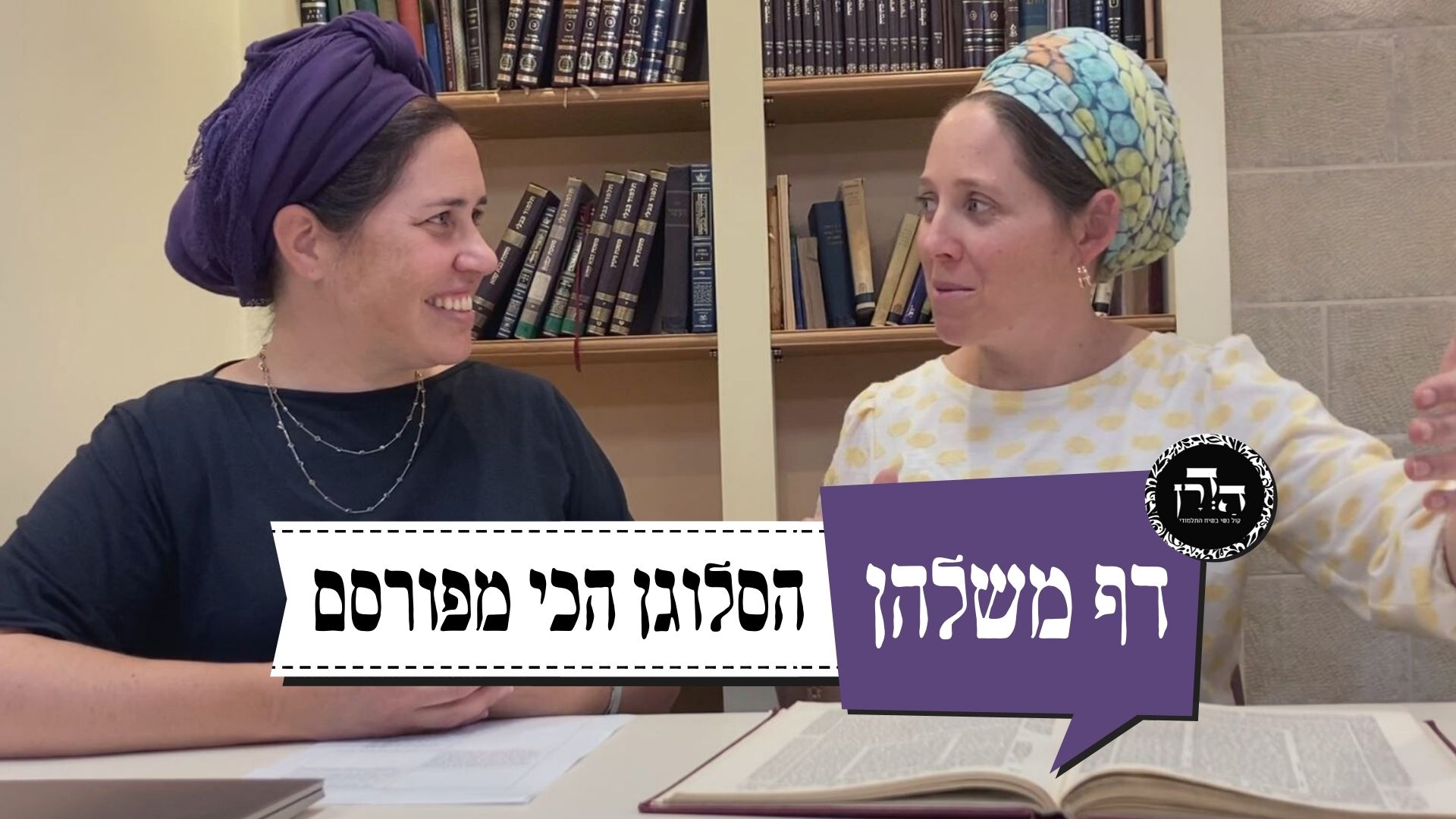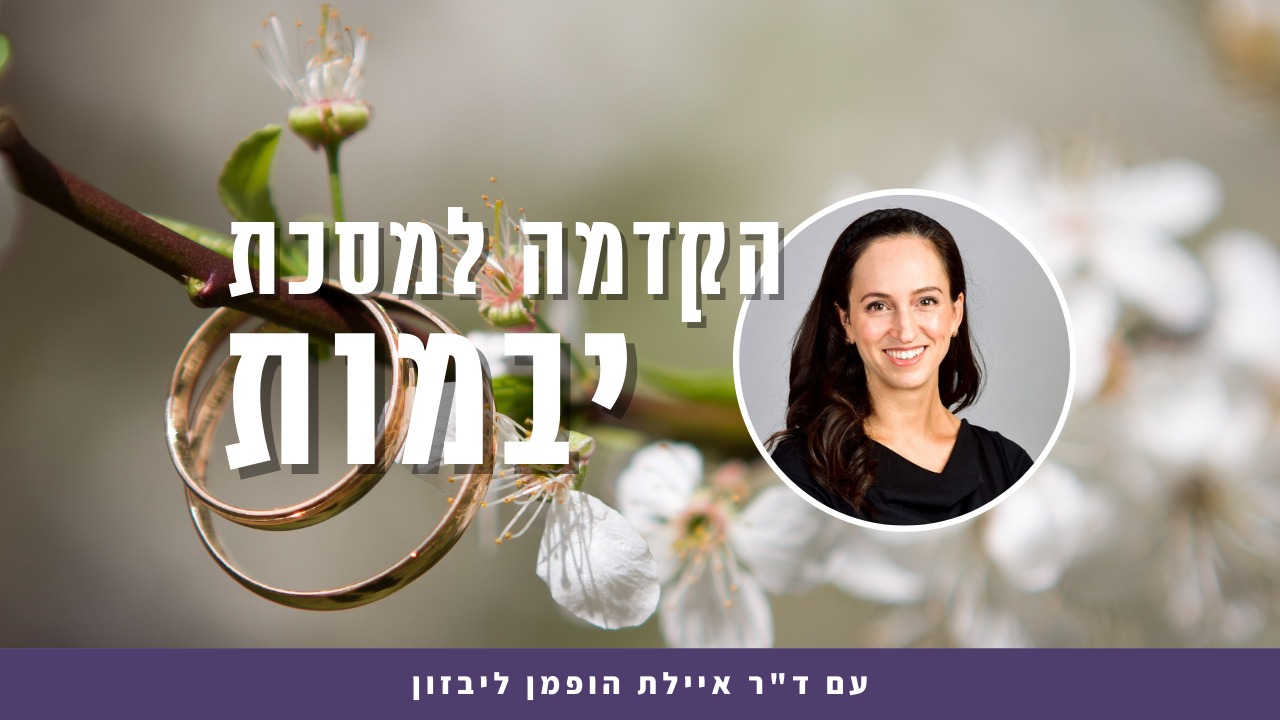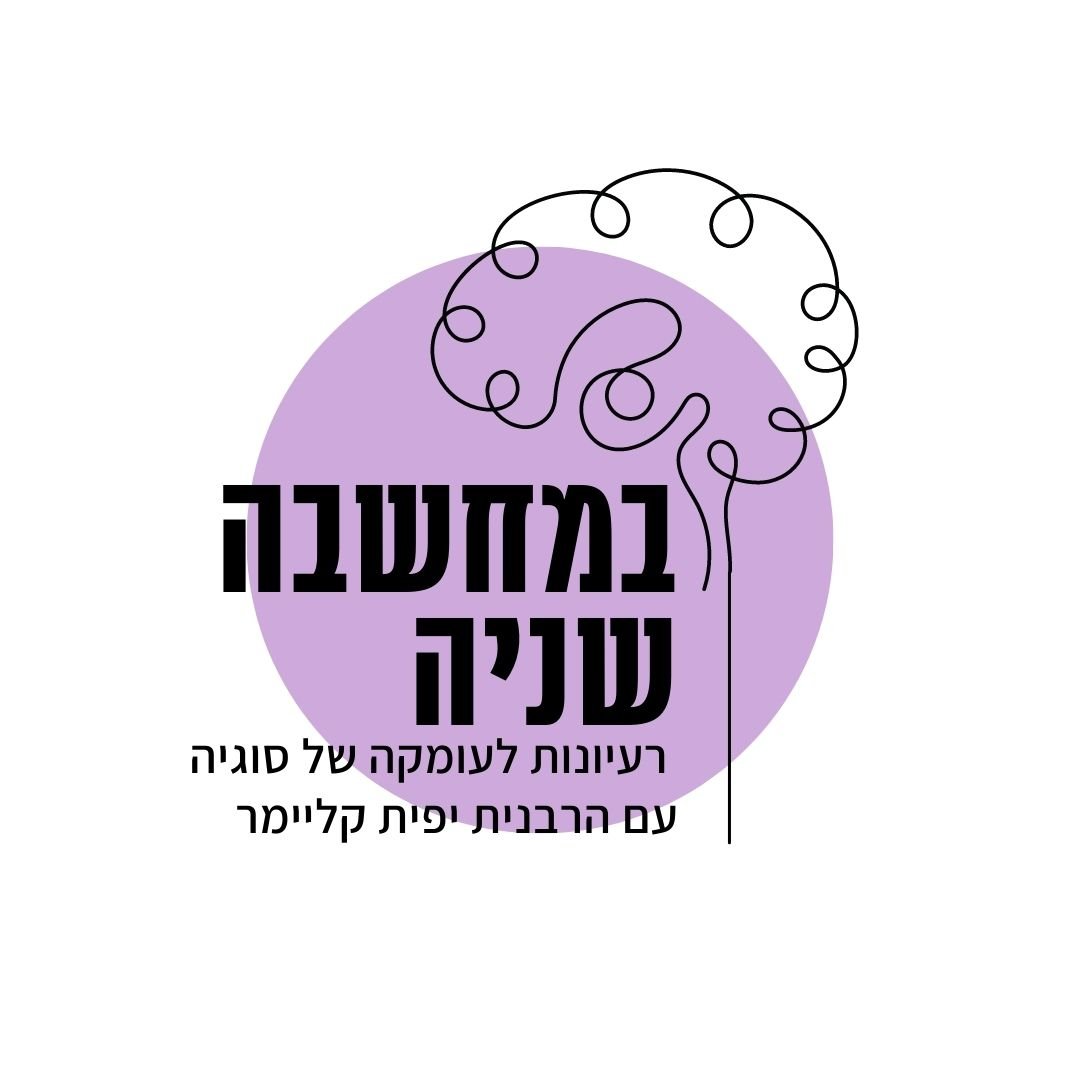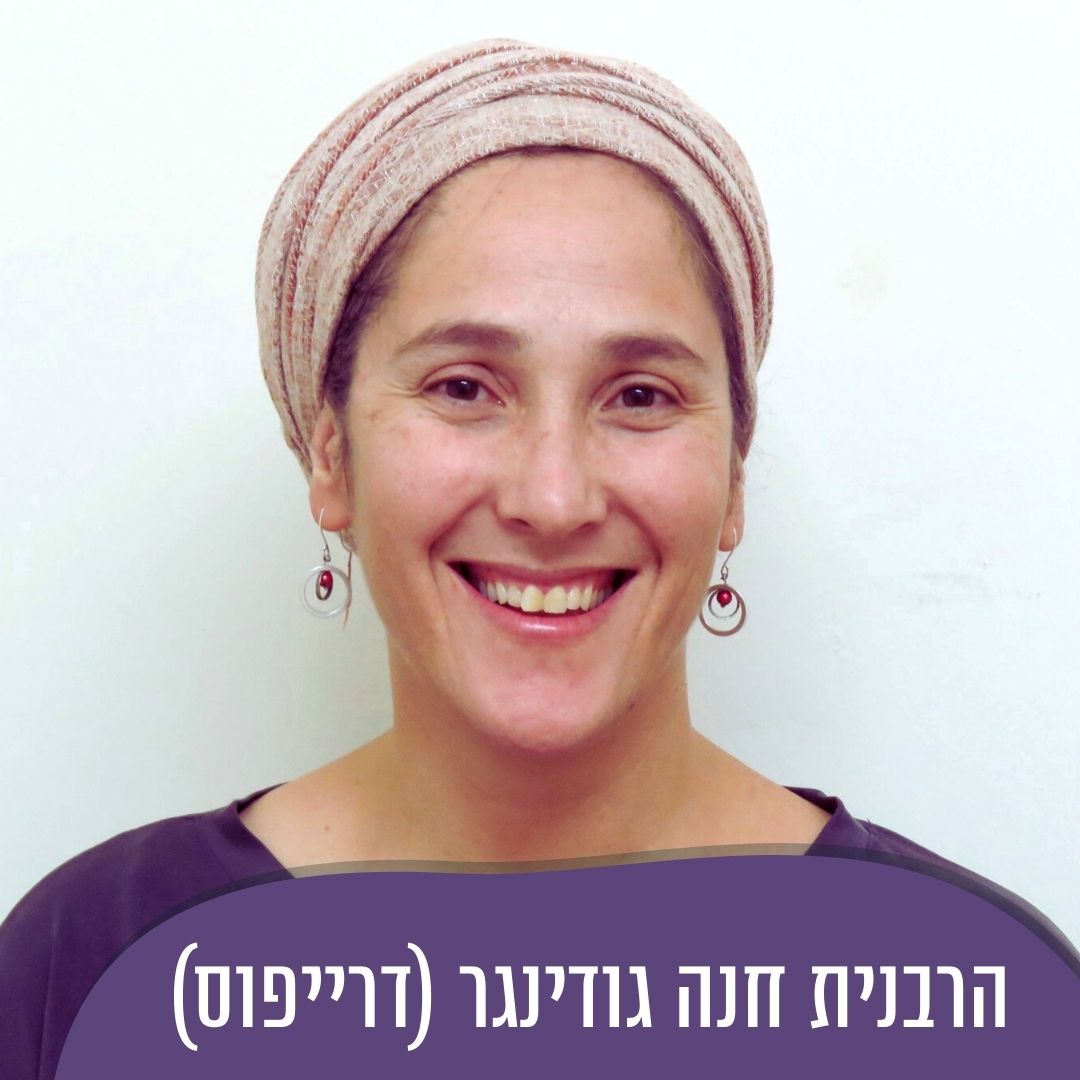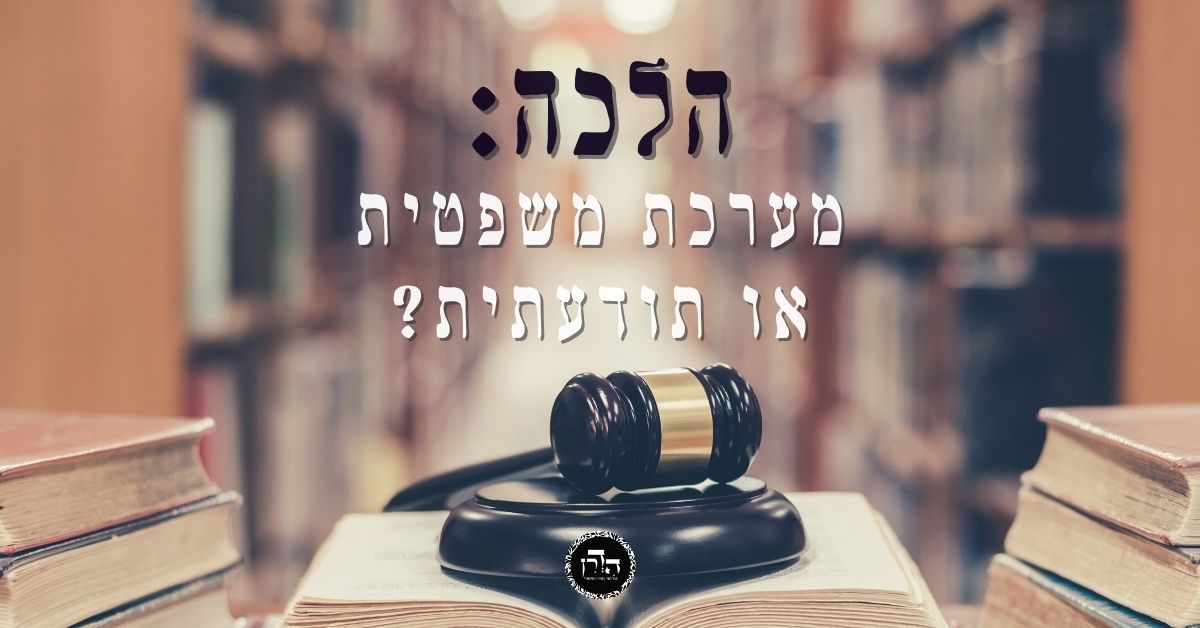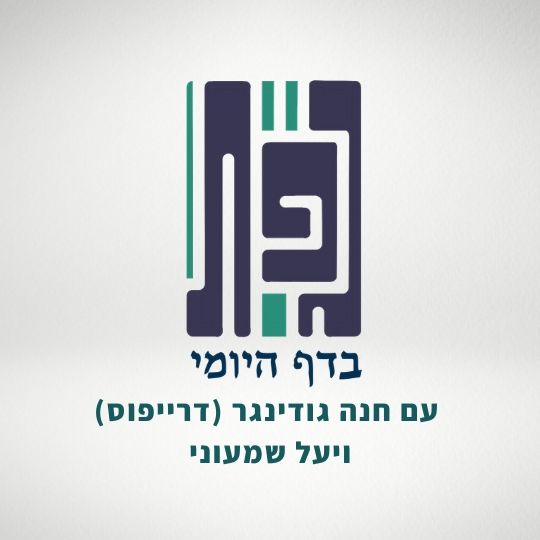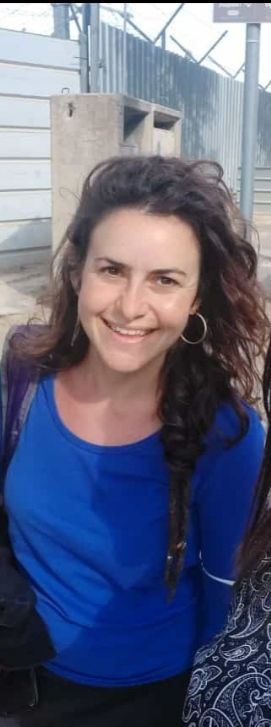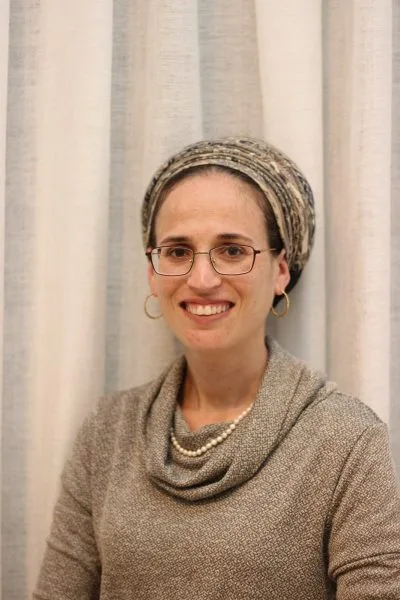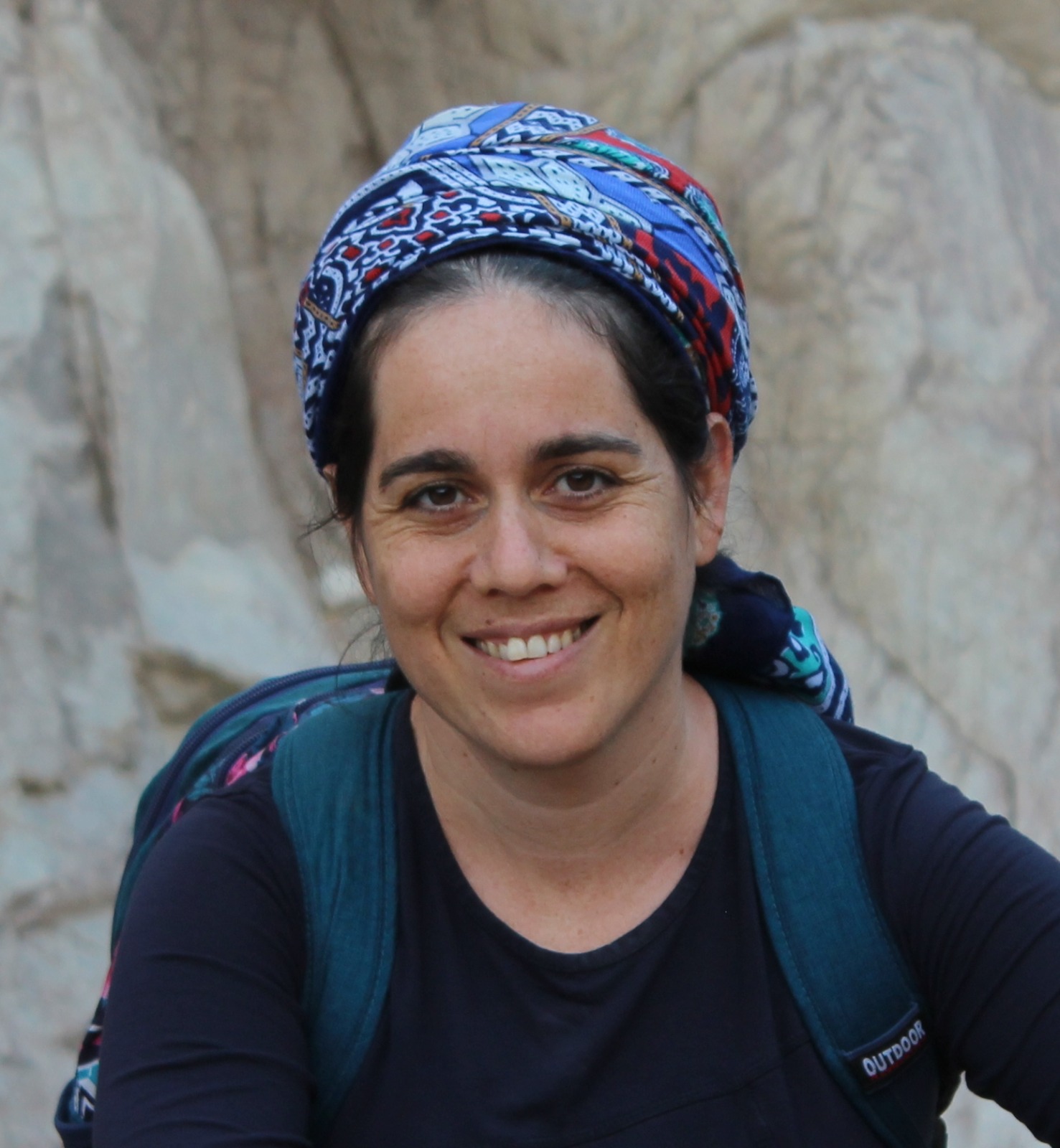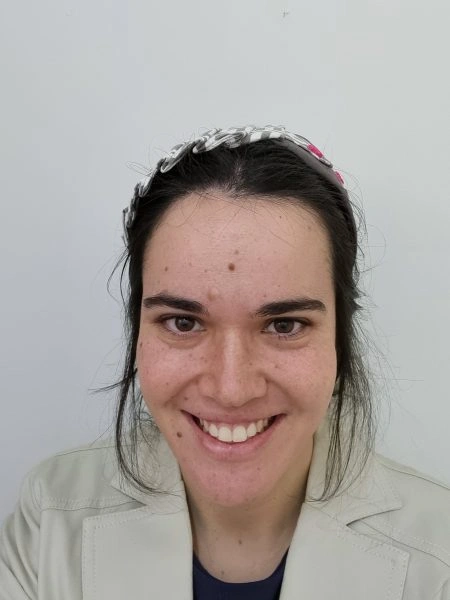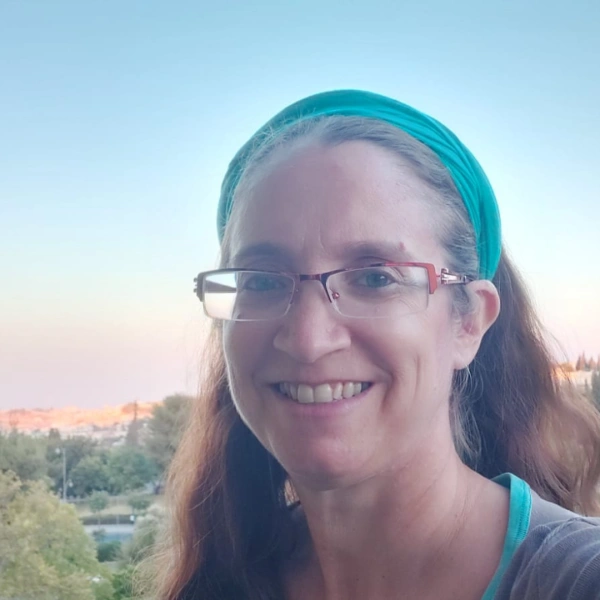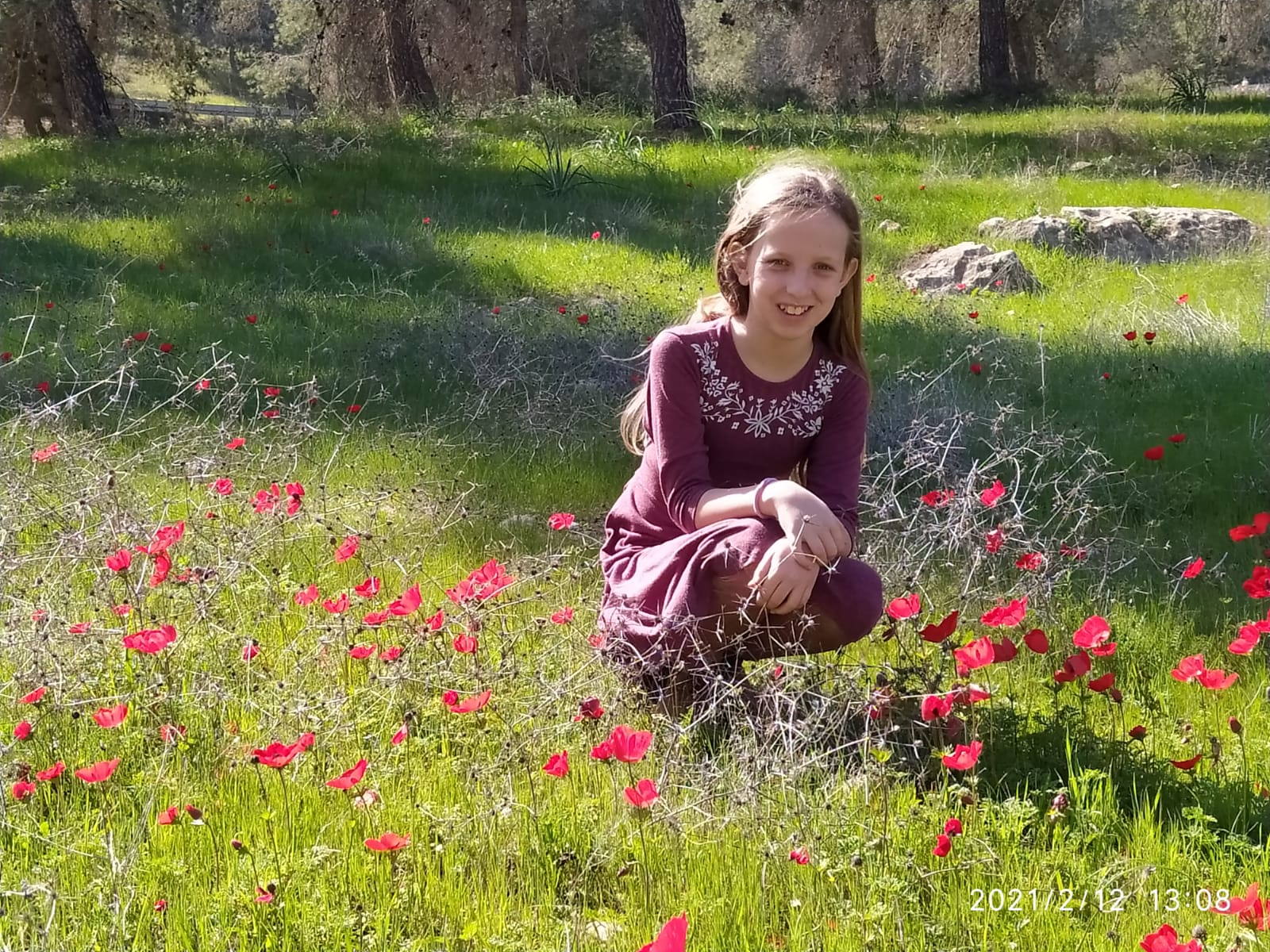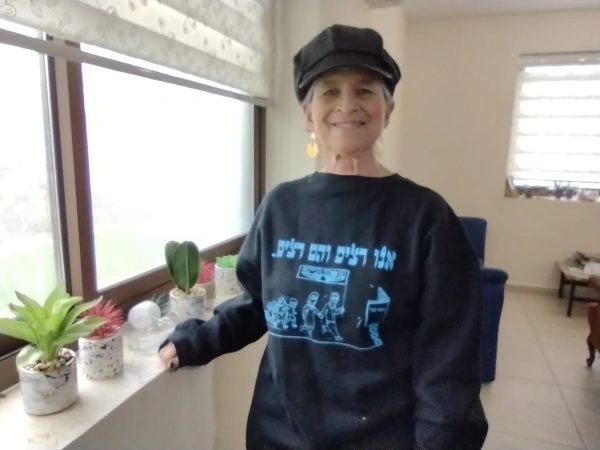האם ר’ יוסי באמת סובר שטומאה טמונה אינה בוקעת ועולה? לפי ר’ יוחנן המשנה סוברת כר’ יוסי שסובר שנגיעה=מאהיל. מי התנא שחולק עליו? האם ביצת שרץ מטמא? האם עכבר (אחד משמונה שרצים) כולל גם עכבר שחציו בשר וחציו אדמה? האם ואיך הם מטמאים?
הלימוד השבוע מוקדש ע”י רוברט ופאולה כהן לע”נ יוסף בן משה הכהן ז”ל. יוסף היה חזן שאהב מאוד לשיר, עבד קשה בחייו והיה מאוד מסור למשפחתו ולקהילה.
רוצה להקדיש שיעור?

כלים
הלימוד השבוע מוקדש ע”י רוברט ופאולה כהן לע”נ יוסף בן משה הכהן ז”ל. יוסף היה חזן שאהב מאוד לשיר, עבד קשה בחייו והיה מאוד מסור למשפחתו ולקהילה.
כלים
העמקה
רוצה להבין מה באמת קורה מתחת לפני השטח של הסוגיה?
שיעורים, פודקאסטים והרחבות של מיטב המורות שלנו יפתחו לך עוד זוויות וכיווני חשיבה.
חדשה בלימוד הגמרא?
זה הדף הראשון שלך? איזו התרגשות עצומה! יש לנו בדיוק את התכנים והכלים שיעזרו לך לעשות את הצעדים הראשונים ללמידה בקצב וברמה שלך, כך תוכלי להרגיש בנוח גם בתוך הסוגיות המורכבות ומאתגרות.
פסיפס הלומדות שלנו
גלי את קהילת הלומדות שלנו, מגוון נשים, רקעים וסיפורים. כולן חלק מתנועה ומסע מרגש ועוצמתי.
חולין קכו
ותני עלה רבי יוסי מטהר אהייא אילימא אסיפא ת”ק נמי טהורי קא מטהר
And it is taught with regard to that halakha in the mishna that Rabbi Yosei deems it pure. To which halakha in the mishna is this referring? If we say that it is referring to the latter clause of the mishna, which discusses a chest placed in the entrance of the house, the first tanna also deems it pure in that case.
אלא דקאמר ת”ק טומאה בתוכה הבית טמא אי משום דדרך טומאה לצאת ואי משום דטומאה טמונה בוקעת וקא”ל רבי יוסי דקאמרת דרך טומאה לצאת יכול הוא להוציאה לחצאין או לשורפה במקומה ודקאמרת טומאה טמונה בוקעת טומאה טמונה אינה בוקעת
Rather, it is clear that the first tanna says that if a source of impurity is inside the compartment of a chest that is inside the house, the house is impure, either because it is typical for a source of impurity to exit its location, or because he holds that a hidden source of impurity breaks through and ascends. And Rabbi Yosei disagrees and says to him: With regard to that which you say that it is typical for a source of impurity to exit its location, it is not necessarily so. One can remove the impure item in halves or burn it in its place inside the compartment. And with regard to that which you say that a hidden source of impurity breaks through and ascends, a hidden source of impurity does not break through. Consequently, Rabbi Yosei must hold that a hidden source of impurity does not break through and ascend.
§Based on the previous statement of Rabbi Yosei, the Gemara established that Rabbi Yosei holds that a hidden source of impurity does not break through and ascend. And the Gemara raises a contradiction between that previous statement of Rabbi Yosei and another statement of Rabbi Yosei.
דתנן הכלב שאכל בשר מת ומת הכלב ומוטל על האסקופה ר”מ אומר אם יש בצוארו פותח טפח מביא את הטומאה ואם לאו אינו מביא את הטומאה
As we learned in a mishna (Oholot 11:7): In the case of a dog that ate the flesh of a corpse, and the dog then died and is lying on the threshold in such a manner that its neck and mouth are facing toward the inside of the house, Rabbi Meir says: If there is an opening the size of one cubic handbreadth inside the neck of the dog, i.e., the neck itself constitutes this measure, the dog imports impurity into the house because the upper portion of the dog’s body overlies the impure item inside the dog and the impurity is transmitted through the neck and mouth of the dog into the house. But if there is not such a large cavity in the neck of the dog, then there is no halakha of a tent, and the dog does not import the impurity into the house.
ר’ יוסי אומר רואין מכנגד השקוף ולפנים הבית טמא מכנגד השקוף ולחוץ הבית טהור
Rabbi Yosei says: One looks to determine exactly where on the threshold the dog is located. If the impure item inside the dog is located anywhere from opposite, i.e., under, the lintel and toward the inside of the house, the house is impure. If the dog is located anywhere from opposite the lintel and toward the outside of the house, the house remains pure.
רבי אלעזר אומר פיו לפנים הבית טהור פיו לחוץ הבית טמא מפני שטומאה יוצאה דרך שוליו
Rabbi Elazar says: One must determine the exact manner in which the dog is lying on the threshold. If its mouth is located inside the house, but its rear is located outside the house, the house remains pure. If its mouth is located outside the house but its rear is located inside the house, the house is impure. This is because the source of impurity exits the dog’s body through its edge, i.e., its rear.
רבי יהודה בן בתירא אומר בין כך ובין כך הבית טמא
Rabbi Yehuda ben Beteira says: In both this case and that case, i.e., whether the dog is lying such that its mouth is inside the house or outside the house, the house is impure. The reason is that the impure item can exit through either the mouth or the rear.
מאי לאו אאין בצוארו פותח טפח קאי רבי יוסי
The Gemara analyzes the statement of Rabbi Yosei that if the dog is located anywhere from under the lintel and toward the inside of the house, the house is impure. What, is the statement of Rabbi Yosei not referring to a case where there is not an opening the size of one cubic handbreadth inside the dog’s neck, with regard to which Rabbi Meir says that the house remains pure? Accordingly, Rabbi Yosei is responding to Rabbi Meir and saying: Even if the neck of the dog is not the size of one cubic handbreadth, as long as the impure item inside the dog is located from under the lintel and toward the house, the house is impure because it overlies the impure item.
וש”מ טומאה טמונה בוקעת
And therefore learn from it that Rabbi Yosei holds that a hidden source of impurity breaks through and ascends, contrary to Rabbi Yosei’s opinion as understood from his previous statement.
אמר רבא רואין את חלל הטומאה קתני ורבי יוסי בתרתי פליג וקא”ל לר’ מאיר דקאמרת כי יש בצוארו פותח טפח מביא את הטומאה אנן בתר חללה אזלינן
Rava said: Rabbi Yosei holds that a hidden source of impurity does not break through and ascend. As for that which Rabbi Yosei teaches: One looks whether the impure item inside the dog is located opposite the lintel and toward the inside of the house, Rabbi Yosei actually teaches: One looks at the empty space adjacent to the source of impurity. And Rabbi Yosei disagrees with Rabbi Meir with regard to two matters, and says to Rabbi Meir: As for that which you say that if there is the width of one cubic handbreadth in the neck of the dog, it imports the impurity into the house, that is not so. Rather, we follow the measure of the empty space, i.e., the neck of the dog imports impurity into the house only if it contains a cubic handbreadth of space in addition to the thickness of the flesh of the neck itself.
ודקא אמרת (הבית) כולו טמא מכנגד השקוף ולפנים הבית טמא מכנגד השקוף ולחוץ הבית טהור
And with regard to that which you say that even if the dog is located on the outer portion of the threshold of the house, the entire house is impure, that is not so. Rather, if the impurity inside the dog is located anywhere from opposite the lintel and toward the inside of the house, the house is impure. If the impurity inside the dog is located anywhere from opposite the lintel and toward the outside of the house, the house remains pure.
רב אחא בריה דרבא מתני לה בהדיא רבי יוסי אומר רואין את חלל הטומאה
Rav Aḥa, son of Rava, teaches that Rava’s explanation is explicit in the mishna itself, as follows: Rabbi Yosei says: One looks at the empty space adjacent to the source of impurity.
ומאן תנא דפליג עליה רבי שמעון הוא דתניא ר”ש אומר
§Previously the Gemara established that Rabbi Yosei holds that with regard to the halakhot of impurity, overlying is referred to as touching, as the transmission of impurity via contact and via overlying are considered one category. But the mishna (Oholot 3:1) cited earlier (125b) states that in the case of one who touches half an olive-bulk of flesh of a corpse, if a tent simultaneously overlies him and another half an olive-bulk of flesh he remains pure. Evidently, there is a tanna who disagrees with Rabbi Yosei and holds that these two methods of transmitting impurity are not the same category. The Gemara asks: Who is the tanna who disagrees with Rabbi Yosei? The Gemara answers: It is Rabbi Shimon, as it is taught in a baraita: Rabbi Shimon says:
שלש טומאות פורשות מן המת שתים בכל אחת ושלישית אין בהן ואלו הן מלא תרווד רקב ועצם כשעורה וגולל ודופק
Parts of a corpse that impart impurity include an olive-bulk of flesh, a complete limb, the majority of a corpse’s bones, and the majority of the essential bones of its skeleton, namely, its legs, spine, and ribs. All of these impart impurity via contact, carrying, and in a tent. There are also three sources of impurity that derive from a corpse, each one of which imparts impurity in two ways but does not impart impurity in a third way. And they are the following: A full ladle of dust from a corpse, and a bone the size of a barley grain, and a grave cover [golel] and a grave wall [dofek] upon which the cover rests.
מלא תרווד רקב מטמא במשא ובאהל ואינו מטמא במגע והיכן מגעו עם אחת מהן
A full ladle of dust imparts impurity via carrying and in a tent, but it does not impart impurity via contact, as it is impossible for one to touch all of the particles of dust simultaneously. And where among these sources of impurity is the imparting of impurity via contact applicable? It is applicable with one of those other two sources of impurity, i.e., a bone the size of a barley grain and the cover or wall of a grave.
עצם כשעורה מטמא במשא ובמגע ואינו מטמא באהל והיכן אהלו עם אחת מהן
A bone the size of a barley grain imparts impurity via carrying and contact, but it does not impart impurity in a tent. This halakha was transmitted to Moses from Sinai. And where among these sources of impurity is impurity imparted in a tent? It is with one of those other two sources of impurity.
גולל ודופק מטמא במגע ובאהל ואינו מטמא במשא והיכן משאו עם אחד מהן:
A grave cover and a grave wall impart impurity via contact and in a tent, but they do not impart impurity via carrying. This halakha too was transmitted to Moses from Sinai. And where among these sources of impurity is impurity transmitted via carrying? It is with one of those other two sources of impurity. It may be inferred from Rabbi Shimon’s statement that a full ladle of dust imparts impurity in a tent but not via contact that he disagrees with Rabbi Yosei and holds that overlying is not the same category as touching.
קולית נבלה וקולית השרץ וכו’: ת”ר (ויקרא יא, לט) בנבלתה ולא בקולית סתומה
§The mishna teaches: With regard to the thigh bone of an unslaughtered carcass and the thigh bone of a creeping animal, one who touches them when they are sealed remains ritually pure, because the bone itself does not impart impurity. With regard to this topic, the Sages taught in a baraita: The verse states: “One who touches the carcass thereof shall be impure until the evening” (Leviticus 11:39). The word “carcass” indicates that one who touches the carcass is impure, but one who touches a sealed thigh bone is not.
יכול אפילו ניקבה ת”ל הנוגע יטמא את שאפשר ליגע טמא ואת שאי אפשר ליגע טהור
One might have thought that even one who touches a perforated thigh bone remains pure. Therefore, the verse states: “One who touches the carcass thereof [benivlatah] shall be impure,” indicating that one who touches a part of the animal through which it is possible to touch the flesh, which has the halakhic status of an unslaughtered carcass [neveila], is impure, but one who touches a part of the animal through which it is impossible to touch the flesh remains pure. Therefore, one who touches a protective layer such as the outside of a sealed thigh bone does not become impure, as it is impossible to touch the marrow.
א”ל רבי זירא לאביי אלא מעתה בהמה בעורה לא תטמא פוק חזי כמה נקבים יש בה
Rabbi Zeira said to Abaye: If that is so, that one who touches the protective layer of a carcass via which it is impossible to touch the flesh of the carcass itself does not become impure, an animal still in its hide should not impart impurity, as one can touch the hide, which constitutes a protective layer, but not the flesh. Abaye answered: Go out and see how many orifices there are in the body of an animal via which one can touch the flesh, e.g., the eyes, the nostrils, and the mouth.
א”ל רב פפא לרבא אלא מעתה כוליא בחלבה לא תטמא תא חזי כמה חוטין נמשכין הימנה
Similarly, Rav Pappa said to Rava: If that is so, that one who touches the protective layer of a carcass via which it is impossible to touch the flesh of the carcass itself does not become impure, the kidney of a carcass that is completely covered in its fat should not impart impurity via contact. Rava answered: Come and see how many sinews emerge from the kidney that one is able to touch.
בעי רב אושעיא חישב עליה לנוקבה ולא ניקבה מהו מחוסר נקיבה כמחוסר מעשה דמי או לא
§The mishna taught that the halakha distinguishes between a sealed and a perforated thigh bone of a carcass or a creeping animal. With regard to this topic, Rav Oshaya raises a dilemma: What is the halakha if one intended to perforate the thigh bone but did not yet perforate it? This is the dilemma: Is a thigh bone lacking perforation considered to be lacking the necessary action for it to impart impurity, and it therefore retains its status as a sealed thigh bone, or not?
הדר פשטה מחוסר נקיבה לאו כמחוסר מעשה דמי:
Rabbi Oshaya then resolves the dilemma: A thigh bone lacking perforation is not considered to be lacking the necessary action for it to impart impurity. If one intends to perforate it, it imparts impurity immediately.
מתני׳ ביצת השרץ המרוקמת טהורה ניקבה כל שהוא טמא עכבר שחציו בשר וחציו אדמה הנוגע בבשר טמא באדמה טהור רבי יהודה אומר אף הנוגע באדמה שכנגד הבשר טמא:
MISHNA: The egg of a creeping animal in which tissue of an embryo developed and one who comes into contact with the egg are ritually pure, as the impure creeping animal is hermetically sealed. But if one perforated the egg with a hole of any size, one who comes in contact with the egg is ritually impure. In the case of a mouse that grows from the ground and is half-flesh half-earth, one who touches the half that is flesh is impure; one who touches the half that is earth is pure. Rabbi Yehuda says: Even one who touches the half that is earth where it is adjacent to the flesh is ritually impure.
גמ׳ ת”ר (ויקרא יא, לא) הטמאים לרבות ביצת השרץ וקולית השרץ
GEMARA: The mishna states that in the case of an egg of a creeping animal in which tissue of an embryo developed, if it is perforated then one who touches it is ritually impure. With regard to this matter the Sages taught in a baraita: The verse states: “These are the impure ones to you among all that creep; whoever touches them when they are dead shall be impure until the evening” (Leviticus 11:31). The term “the impure ones” is interpreted as including the egg of a creeping animal and the thigh bone of a creeping animal in the category of sources of impurity.
יכול אפי’ לא ריקמה ת”ל (ויקרא יא, כט) השרץ מה שרץ שרקם אף ביצת השרץ שרקמה
One might have thought that even an egg in which tissue of an embryo has not developed imparts impurity. Therefore, the verse states: “That creep,” indicating that just as a creeping animal has developed tissue, so too only the egg of a creeping animal in which tissue of an embryo has developed imparts impurity.
יכול אפי’ לא ניקבו ת”ל הנוגע יטמא את שאפשר ליגע טמא ואת שאי אפשר ליגע טהור
One might have thought that in the case of an egg in which tissue of an embryo has developed, it imparts impurity even if it was not perforated. Therefore, the verse states: “Whoever touches them when they are dead shall be impure,” indicating that when it is possible to touch the flesh, contact renders one impure; but when it is impossible to touch the flesh, one remains pure.
וכמה נקיבתה כחוט השערה שאפשר ליגע כחוט השערה:
And how large must its perforation be to render one touching the egg or thigh bone impure? Its width must be the size of a strand of hair, as it is possible for one to touch the inside of an egg or thigh bone with a strand of his hair.
עכבר שחציו [וכו’]: אמר רבי יהושע בן לוי והוא שהשריץ על פני כולו איכא דמתני לה אסיפא רבי יהודה אומר אף הנוגע באדמה שכנגד בשר טמא אמר ר’ יהושע בן לוי והוא שהשריץ על פני כולו
§The mishna teaches: In the case of a mouse that grows from the ground and is half-flesh half-earth, one who touches the half that is flesh is impure. Rabbi Yehoshua ben Levi says in this regard: One becomes impure in such a case only if the flesh of the mouse has developed along the entire length of the mouse, from head to foot. Some teach the statement of Rabbi Yehoshua ben Levi with regard to the latter clause of the mishna: Rabbi Yehuda says: Even one who touches the half that is earth where it is adjacent to the flesh is ritually impure. Rabbi Yehoshua ben Levi says: One becomes impure in such a case only if the flesh of the mouse has developed along the entire length of the mouse.
מאן דמתני לה ארישא כל שכן אסיפא ומאן דמתני לה אסיפא אבל רישא אע”ג דלא השריץ
The one who teaches the statement of Rabbi Yehoshua ben Levi with regard to the first clause of the mishna, all the more so he teaches this same halakha with regard to the latter clause of the mishna. But the one who teaches the statement of Rabbi Yehoshua ben Levi with regard to the latter clause of the mishna holds that it applies only to that clause, with regard to one who touches the half that is earth where it is adjacent to the flesh according to Rabbi Yehuda. But according to the opinion of the first tanna, stated in the first clause of the mishna, even if the flesh of the mouse has not developed along the entire length of the mouse, one who touches the half of the mouse that is flesh is impure.
ת”ר מתוך שנאמר עכבר שומע אני אפילו עכבר שבים ששמו עכבר ודין הוא טימא בחולדה וטימא בעכבר מה חולדה מין הגדל על הארץ אף עכבר מין הגדל על הארץ
§The Sages taught in a baraita concerning the following verse: “And these are they which are impure to you among the creeping animals that creep upon the earth: The weasel, and the mouse, and the great lizard after its kinds” (Leviticus 11:29). Since “mouse” is stated among the creeping animals that impart impurity, I would derive that even a sea mouse, i.e., a sea creature that has an appearance similar to a mouse, imparts impurity because its name is also mouse. But ostensibly, the opposite conclusion could be derived through logical inference: The verse deems a weasel impure and deems a mouse impure. Therefore, just as a weasel is a species that grows on land, so too the mouse to which the verse is referring is a species that grows on land; a sea mouse does not impart impurity.
או כלך לדרך זו טימא בחולדה וטימא בעכבר מה חולדה כל ששמה חולדה אף עכבר כל ששמו עכבר אפי’ עכבר שבים ששמו עכבר ת”ל (ויקרא יא, ב) על הארץ
Or, perhaps go this way: The verse deems a weasel impure and deems a mouse impure; accordingly, just as “weasel” is referring to any animal whose name is weasel, so too, “mouse” is referring to any animal whose name is mouse, even a sea mouse, as its name is also mouse. Therefore, the verse states: “Upon the earth,” indicating that a land mouse imparts impurity, but a sea mouse does not.
אי על הארץ יכול על הארץ יטמא ירד לים לא יטמא
If this halakha is derived only from the phrase “upon the earth,” one might have thought that the verse means that any mouse, whether a land mouse or a sea mouse, imparts impurity when it is upon the earth, but if it descended to the sea it does not impart impurity.

